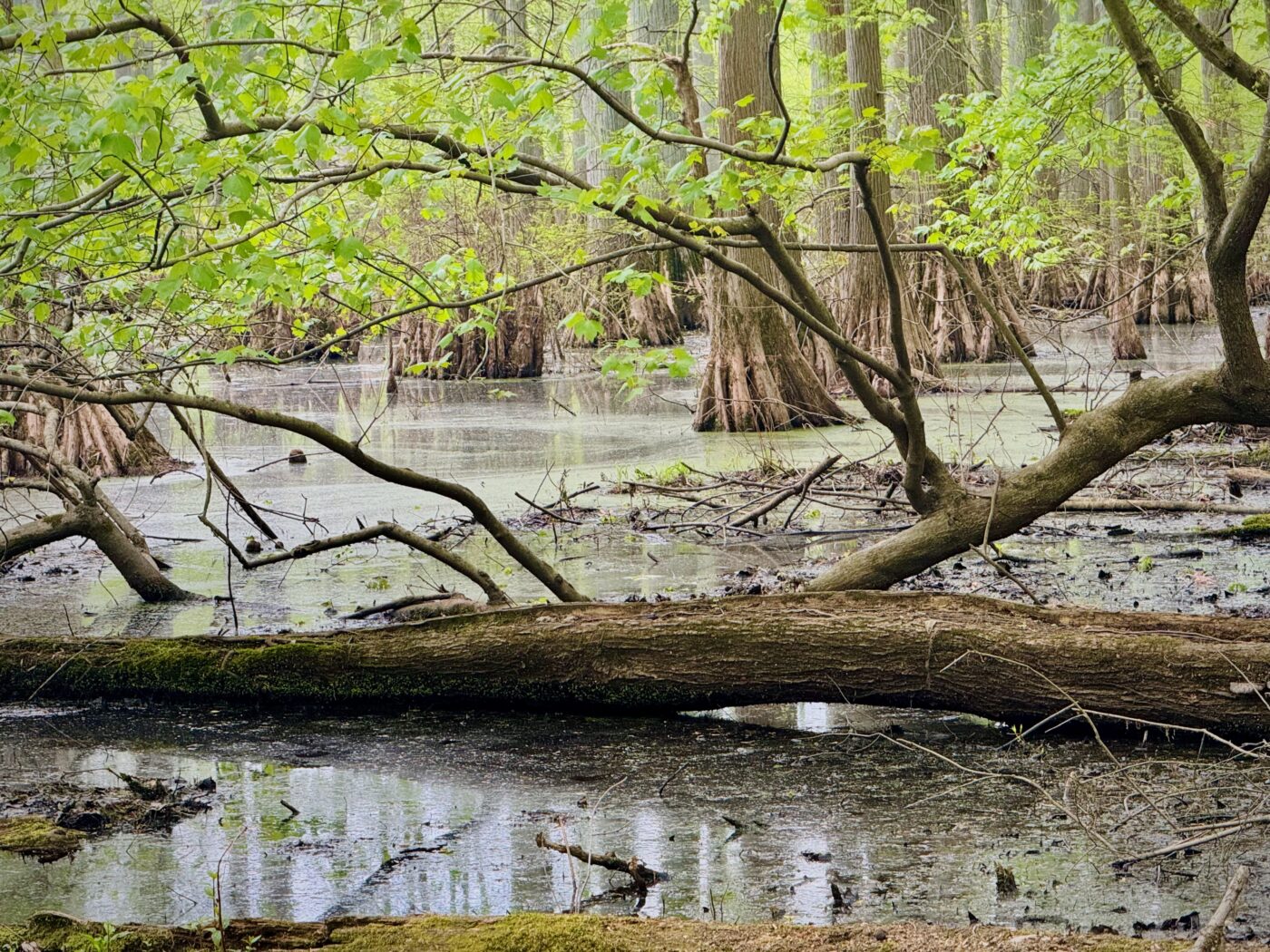Snake Road
It’s exactly what you think it is… A road full of snakes
Southern Illinois has dozens of interesting historical sites, fun family activities and surprisingly gorgeous landscapes. The Southernmost Illinois Tourism Board is happy to recommend many unique and enjoyable experiences, ranging from The American Fluorite Museum (dedicated, in a somewhat market-leading way one imagines, to the mining of fluorite, Illinois’s state mineral. However, they are currently closed), The Bald Knob Cross of Peace (America’s version of Rio’s Corcovado) and the Pomona Natural Bridge Trail.
There’s one site, however, that the Tourism Board isn’t promoting. Officially, it’s known as Forest Service Road Number 345, but visitors from around the country flock here because of the name its better known by: Snake Road!
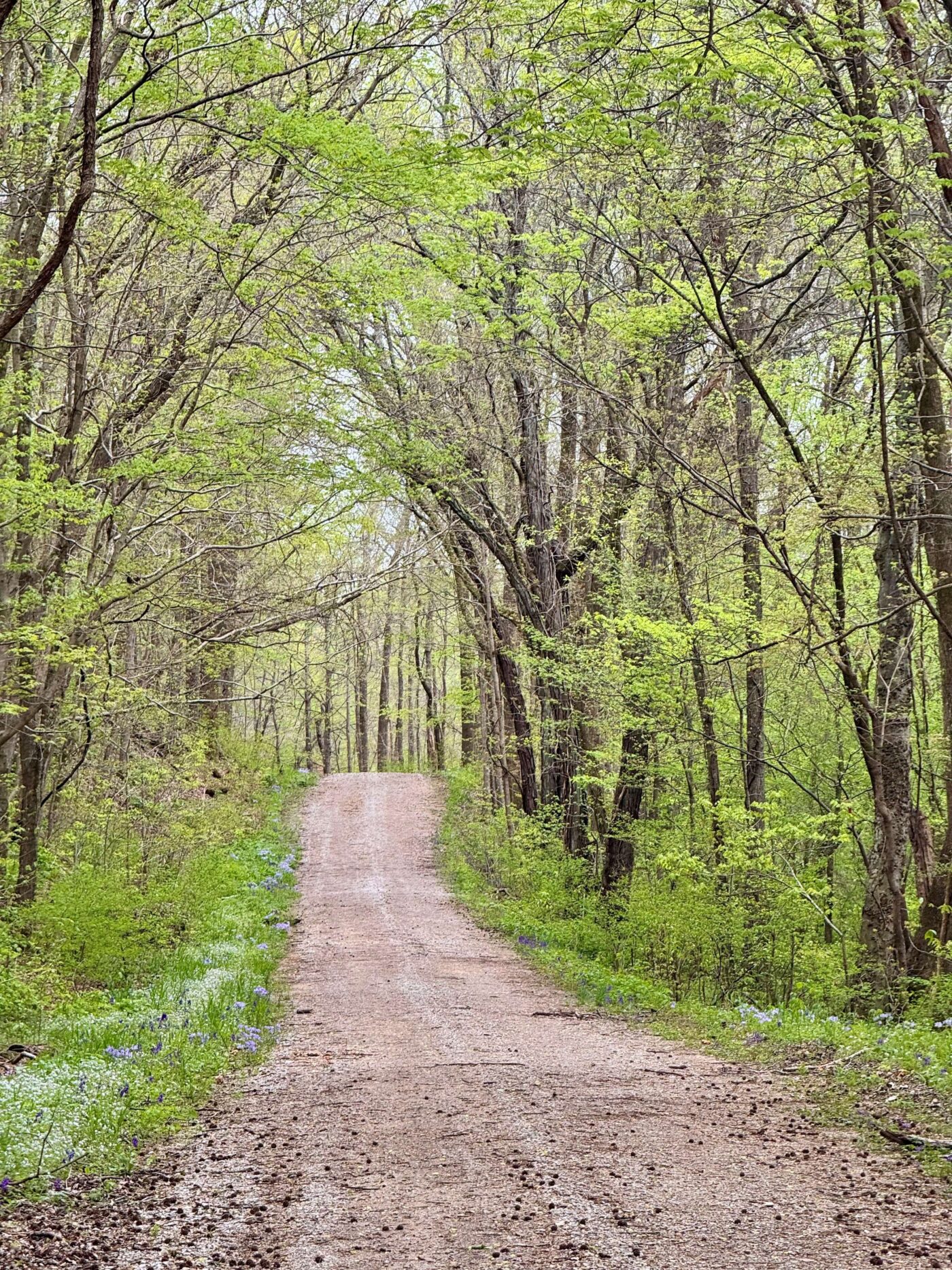
Snake Road is located in the LaRue Pine Hills area of the Shawnee National Forest. The easiest way to get there (at least from California) is to fly into St. Louis and take a series of small, two lane highways for about two and a half hours due south. The last three miles of the trip is on a very bumpy gravel road — four wheel drive is definitely recommended.
Snake road is a bucolic gravel road with gentle hills. On one side of the road are limestone bluffs, some over 50 feet high. On the other is an extensive swamp that connects to the nearby Big Muddy River. The road is 2.5 miles long.
It turns out that a combination of bluffs and swamp makes for ideal snake terrain. In the winter, snakes hibernate (well, technically it’s called brumation). The limestone bluffs have many cracks and crevices which make perfect places for snakes to shelter from winter weather. In spring, the snakes emerge from brumation searching for food. The swamp across the road is filled with fish, frogs, and insects – a welcome buffet for hungry snakes.
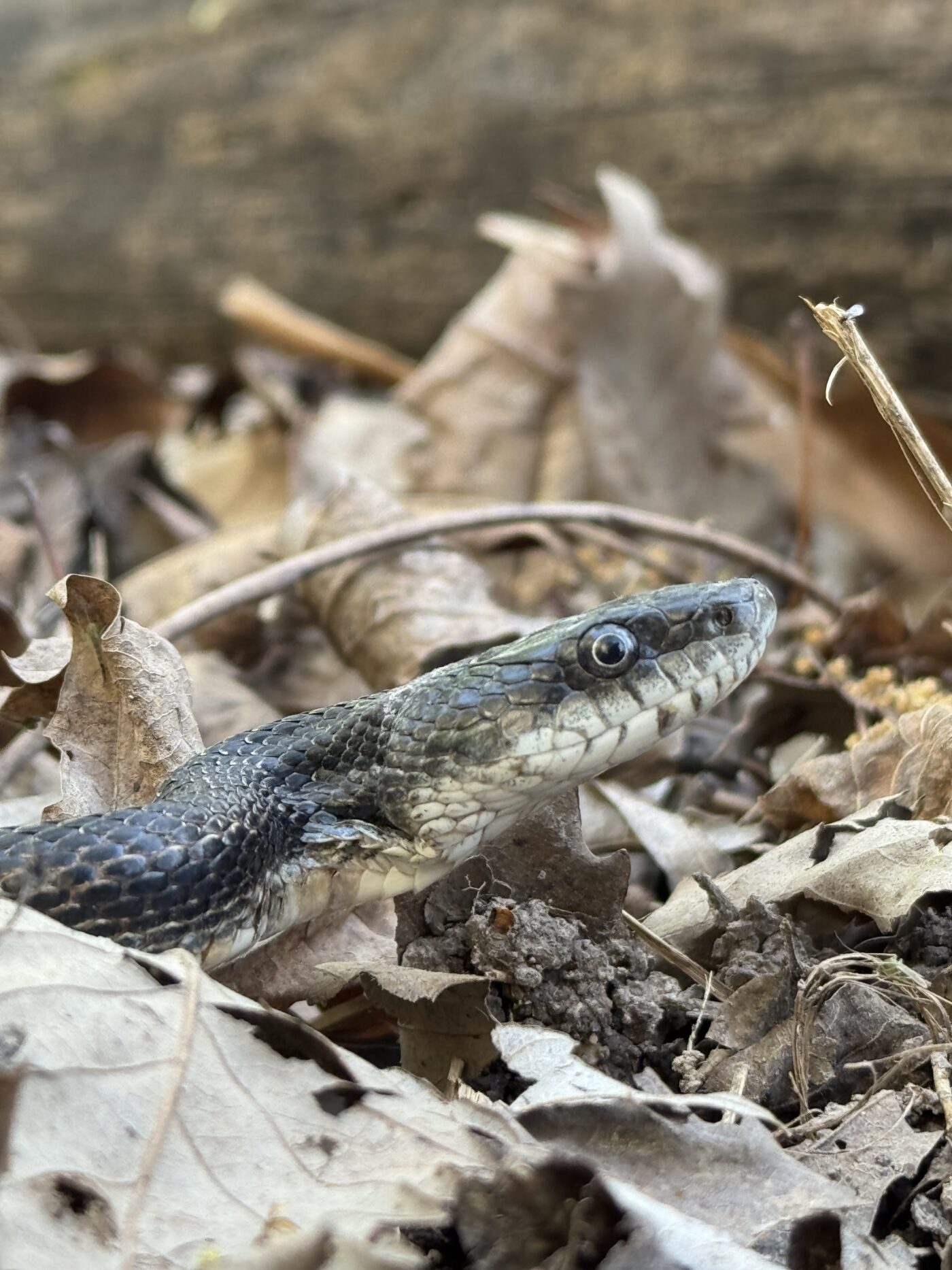
For many years, however, the road that separates the bluffs and the swamp became a significant hazard for the crossing snakes, as cars would smoosh many of the migrating serpents. Fortunately, the forest service stepped in and now closes the road to cars twice a year (in spring and in fall) to protect the snakes. This means that both snakes and snake lovers can enjoy the road during peak migration without fear of cars.
My son Sammy loves snakes. During California snake season (roughly April to August) he canvasses the parks near our house, turning over rocks and listening for the faint rustle of a snake in the grass. In a snake season, he will see around 50 snakes.
Snake Road, however, promises that level of snake activity in days, not months, so for his spring break this year, we made the journey to Snake Road.
We arrived at Snake Road in mid-April — right in the middle of the (pretty short distance) bluffs-to-swamp part of the snake migration. We started hiking on a cool morning in the middle of the week.
To our surprise, the road was virtually empty — great, more snakes for us! We slowly walked down the road, carefully looking at the ground in front of us and in the brush on the sides.
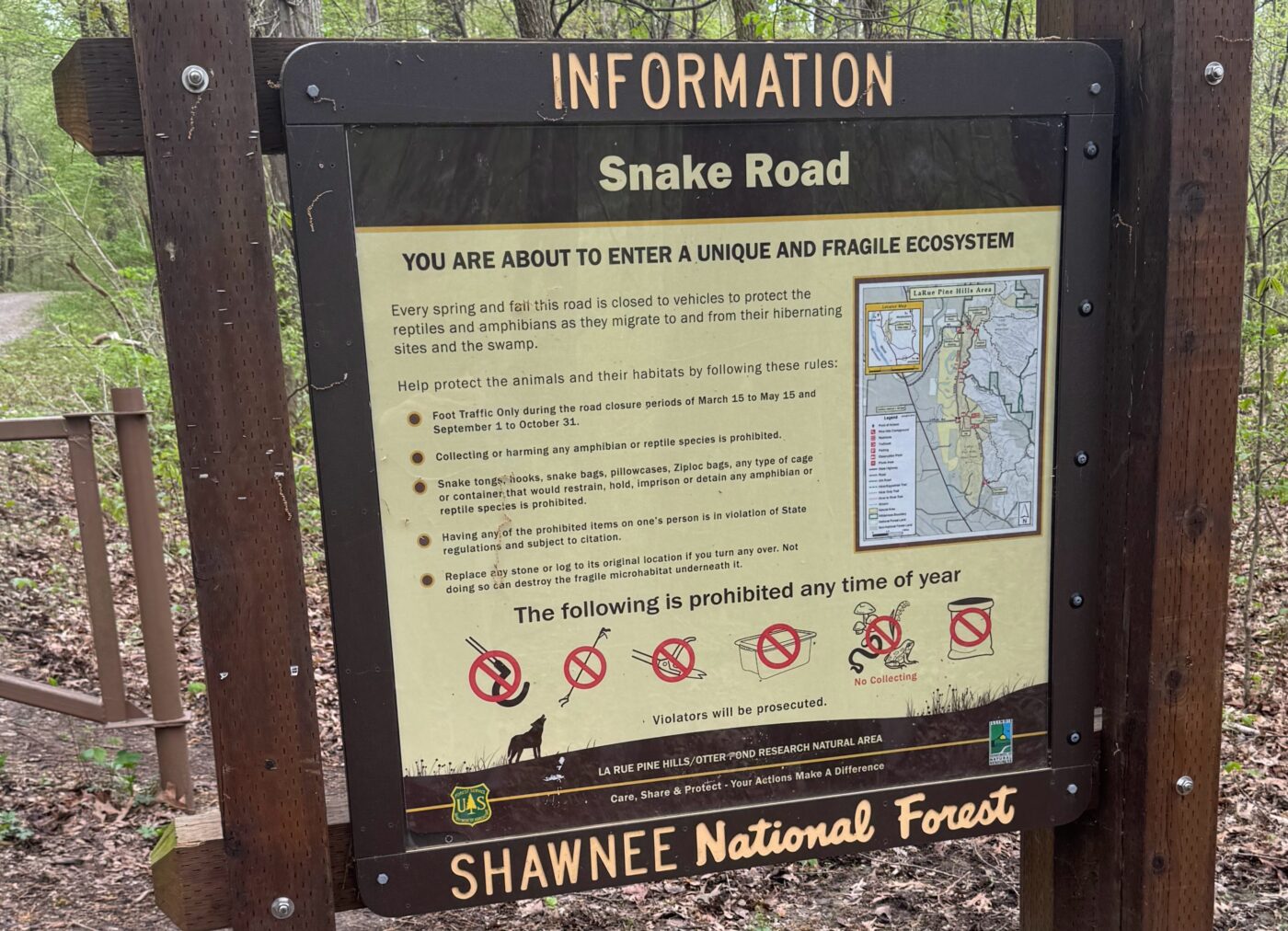
Over the first three hours, we saw nothing. I had imagined seeing snakes at every turn, but the road –- while peaceful — was snake free. After lunch, the sun came out and the temperature started to climb. We finally saw our first snake – a young cottonmouth. Cottonmouths — so named because when threatened they open their mouth to reveal their white, cotton-like throats — are the most common snake seen at Snake Road. They are venomous but, like most snakes, prefer to avoid confrontation with people. This particular snake froze on the spot, opened wide, and gave us plenty of time to take pictures.
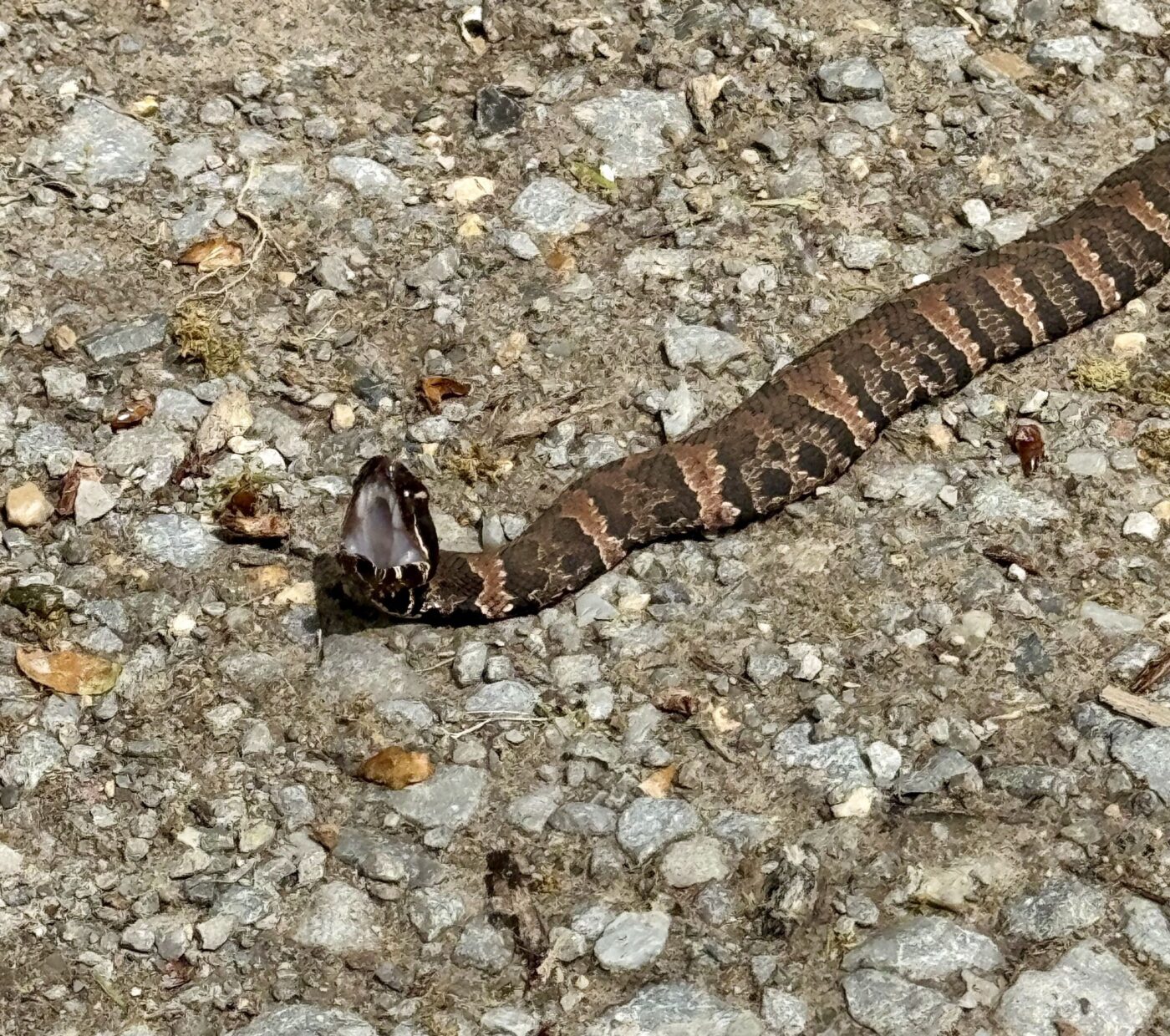
The warmer weather, it turns out, is a key motivator for snakes to leave the bluffs and head to the swamp. Over the next two hours we ended up seeing five cottonmouths. Even better, we met some of Snake Road’s most frequent tourists. In particular, Pheonyx, a guy who seemed to know the hiding places of every snake on the road. In a matter of hours, he found us a grey rat snake hiding in a tree, a green water snake resting on a partially submerged log, and a plain belly water snake.
Day one on Snake Road started slowly but ended fantastically.
On day two, we were already seasoned enough Snake Road walkers to know to wait until the warmer weather in the afternoon to start our hike. To pass the time until peak snake sighting hour, we visited a nearby attraction, the Little Grand Canyon. The highlight for most people visiting this park is a three mile hike down to a series of cascading waterfalls, deep in a lush ravine.
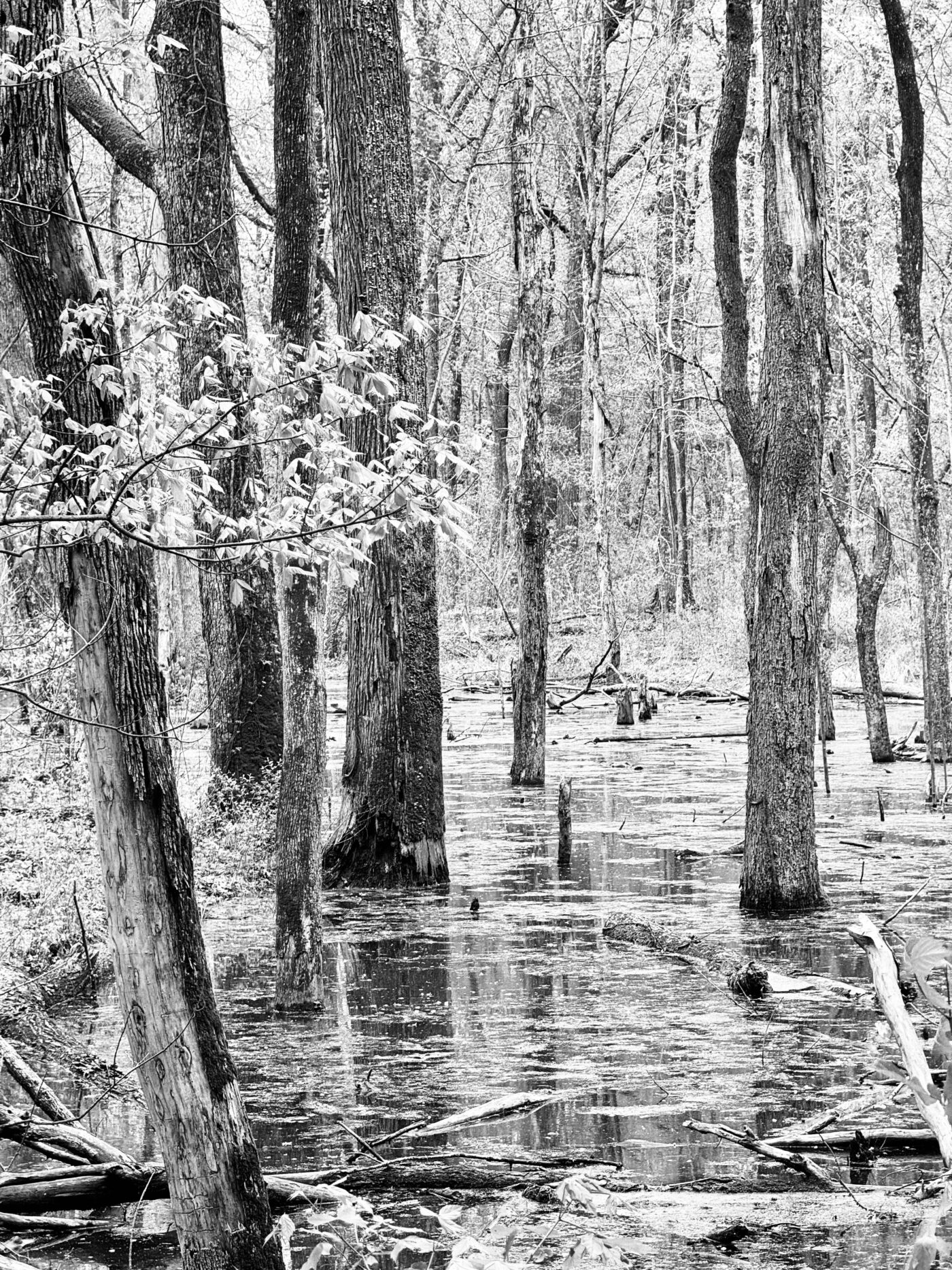
And that alone would have made the excursion worth it — the waterfall was quite pretty. Even better for us, however, was the discovery of a six foot long grey rat snake, lazily blocking the trail down to the waterfall. My son carefully picked it up (you are not allowed to pick up snakes on Snake Road, but elsewhere the rules are more lax), and enjoyed a few moments with this beautiful (non-venomous) snake.
Later that day we arrived at Snake Road and saw over a dozen snakes in about three hours. Pro tip: the best way to see snakes is to ask fellow travelers about their sightings. Snakes are pretty good at camouflage so it truly takes a village to find them!
In total, over three days of hiking Snake Road, we saw between 35-40 snakes from five different species.
Many people have asked me what I guess is an obvious question: is this safe? There are three venomous snakes that you might run into on Snake Road — the cottonmouth (everyone sees them), the copperhead (few see them) and the timber rattlesnake (very rare). What people generally misunderstand about snakes is that they have absolutely no interest in interacting with humans. When snakes sense a human nearby, they leave as quickly as possible, or they freeze in the hopes that the human doesn’t see them.
Most snake bites come from people trying to pick up snakes. After that, it is accidental bites, like someone stepping on a snake in high grass. So, yeah, you do have to be a little careful when walking Snake Road to make sure you don’t miss a snake on the road, but by walking slowly and paying attention, this shouldn’t happen!
Overall, Snake Road is a fascinating place. It’s beautiful, unique, and if you like wildlife, you’ll get plenty here (and not just snakes). In an age where Instagram posts turn hidden gems into overcrowded tourist traps, Snake Road has so far avoided discovery. Maybe it’s a good thing that the Tourism Bureau is focused on Fluorite instead of snakes!






